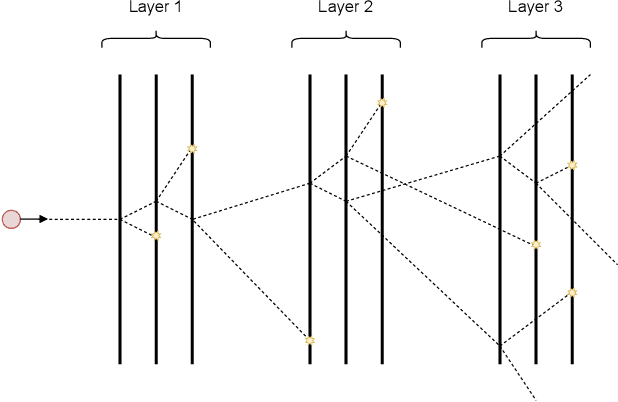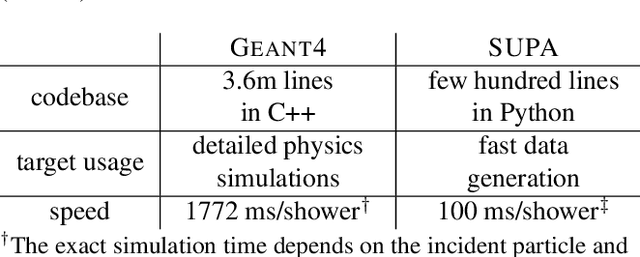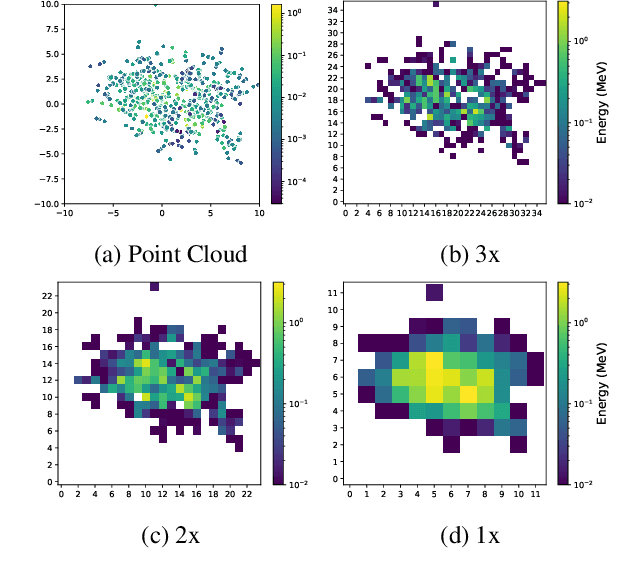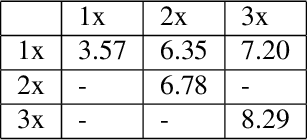Atul Kumar Sinha
DeepEMD: A Transformer-based Fast Estimation of the Earth Mover's Distance
Nov 16, 2023Abstract:The Earth Mover's Distance (EMD) is the measure of choice between point clouds. However the computational cost to compute it makes it prohibitive as a training loss, and the standard approach is to use a surrogate such as the Chamfer distance. We propose an attention-based model to compute an accurate approximation of the EMD that can be used as a training loss for generative models. To get the necessary accurate estimation of the gradients we train our model to explicitly compute the matching between point clouds instead of EMD itself. We cast this new objective as the estimation of an attention matrix that approximates the ground truth matching matrix. Experiments show that this model provides an accurate estimate of the EMD and its gradient with a wall clock speed-up of more than two orders of magnitude with respect to the exact Hungarian matching algorithm and one order of magnitude with respect to the standard approximate Sinkhorn algorithm, allowing in particular to train a point cloud VAE with the EMD itself. Extensive evaluation show the remarkable behaviour of this model when operating out-of-distribution, a key requirement for a distance surrogate. Finally, the model generalizes very well to point clouds during inference several times larger than during training.
SUPA: A Lightweight Diagnostic Simulator for Machine Learning in Particle Physics
Feb 10, 2022



Abstract:Deep learning methods have gained popularity in high energy physics for fast modeling of particle showers in detectors. Detailed simulation frameworks such as the gold standard Geant4 are computationally intensive, and current deep generative architectures work on discretized, lower resolution versions of the detailed simulation. The development of models that work at higher spatial resolutions is currently hindered by the complexity of the full simulation data, and by the lack of simpler, more interpretable benchmarks. Our contribution is SUPA, the SUrrogate PArticle propagation simulator, an algorithm and software package for generating data by simulating simplified particle propagation, scattering and shower development in matter. The generation is extremely fast and easy to use compared to Geant4, but still exhibits the key characteristics and challenges of the detailed simulation. We support this claim experimentally by showing that performance of generative models on data from our simulator reflects the performance on a dataset generated with Geant4. The proposed simulator generates thousands of particle showers per second on a desktop machine, a speed up of up to 6 orders of magnitudes over Geant4, and stores detailed geometric information about the shower propagation. SUPA provides much greater flexibility for setting initial conditions and defining multiple benchmarks for the development of models. Moreover, interpreting particle showers as point clouds creates a connection to geometric machine learning and provides challenging and fundamentally new datasets for the field. The code for SUPA is available at https://github.com/itsdaniele/SUPA.
 Add to Chrome
Add to Chrome Add to Firefox
Add to Firefox Add to Edge
Add to Edge